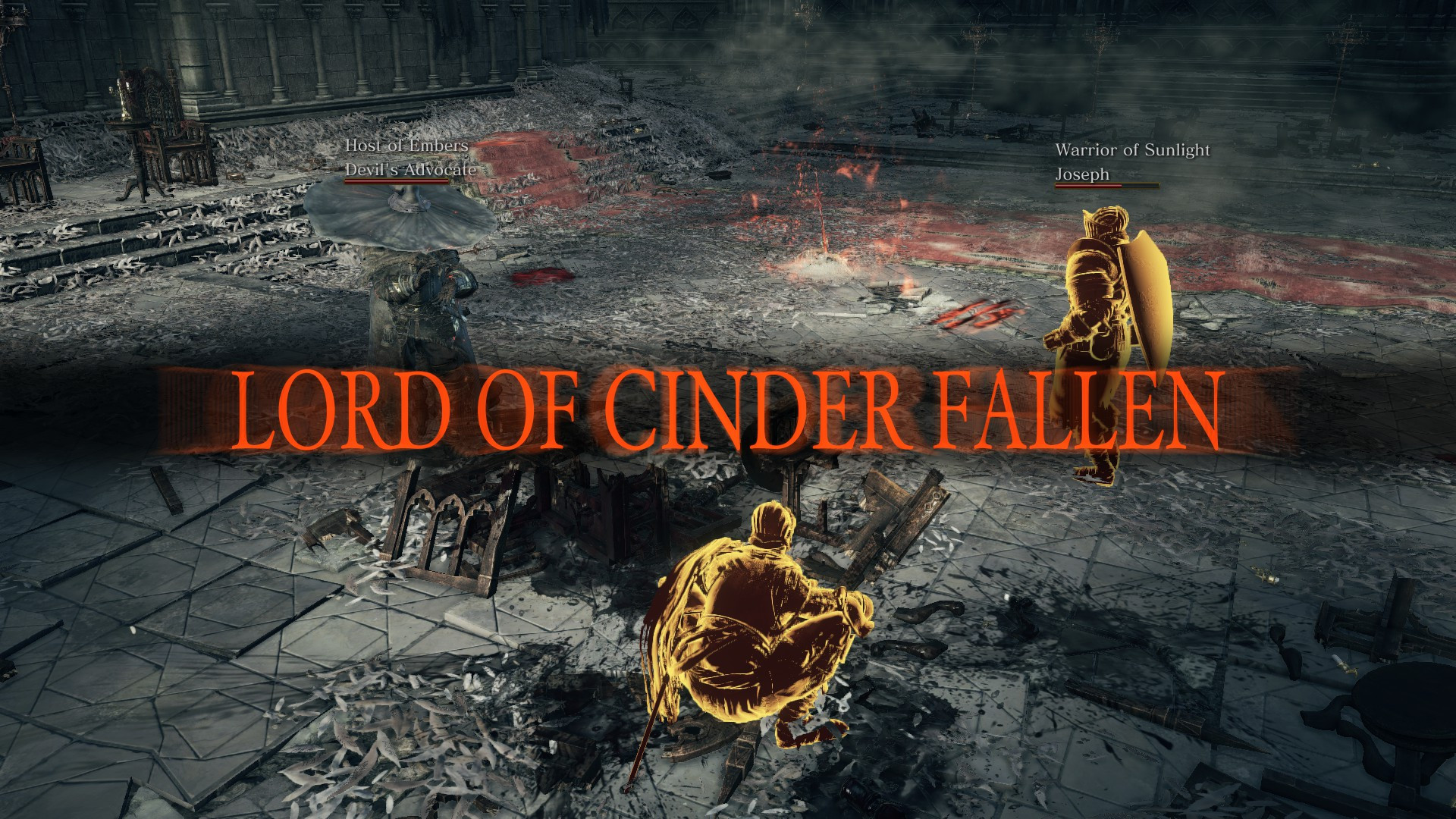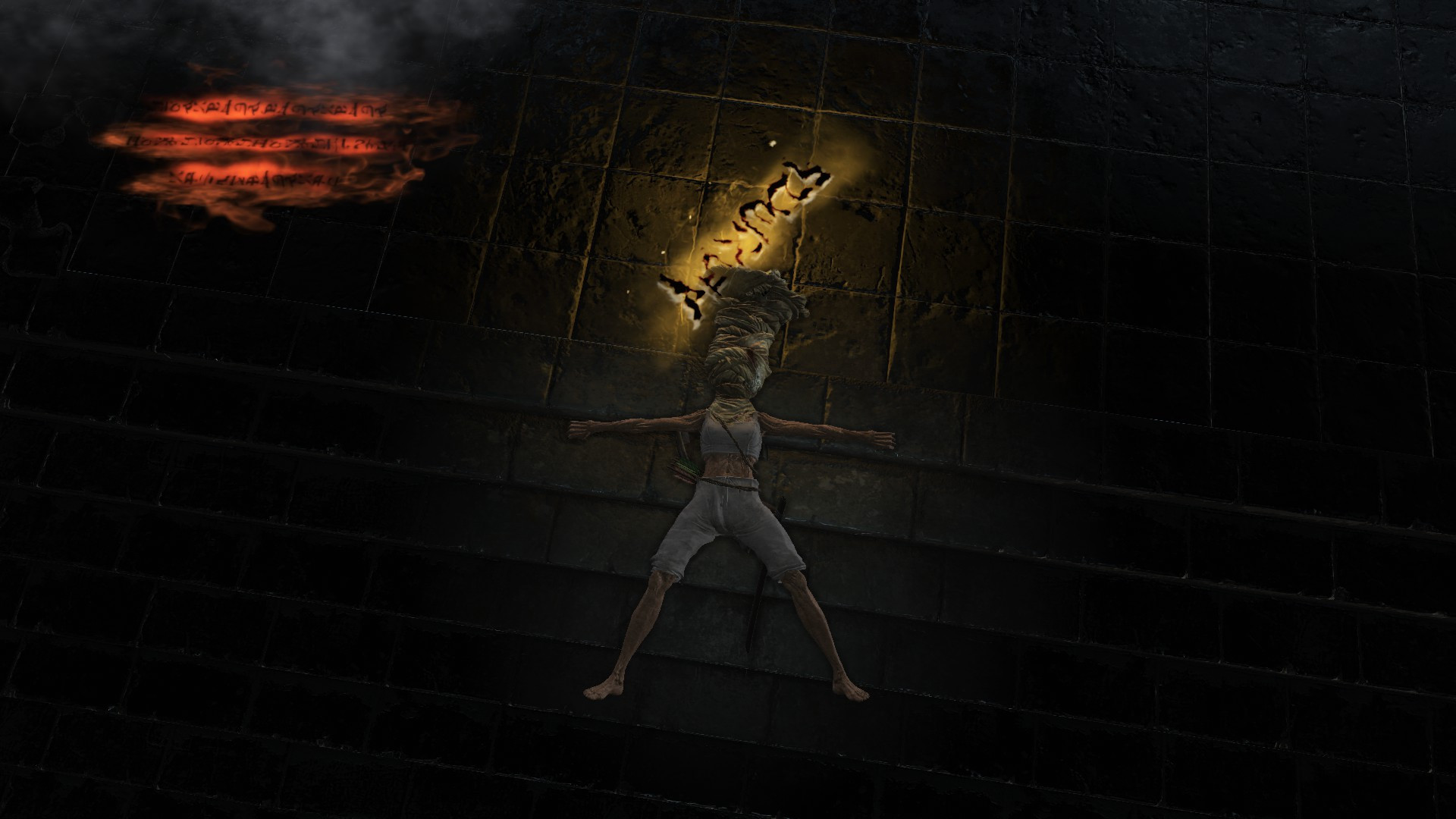
About SqncBrk
Sequence break is the act of obtaining an item out of order or performing certain action out of order. In…

You unearth on the graveyard among ash and bones. No rest for the undead again. Or you can use the fancy The Ashen One as your new Maiden in Black calls you, or unkindled as everyone else does. There’s a nitpicking explanation for the difference between unkindled and undead. The short version is: you tried to link the fire like Gwyn did in the first game, but was found unworthy of the task. You’ve turned into ash and not into cinder like those who were capable of performing the task. Now you rise again because those who unlike you were good enough as a kindling (Lords of Cinder) have abandoned their thrones. The massive boulders shaped into armchairs that are left in the Firelink Shrine look like distant relatives of tombstones in Hunter’s Dream from Bloodborne. Or rather even archstones from Demon’s Souls since Firelink Shrine now looks a lot more like Nexus (but has a secret dark counterpart like Hunter’s Dream did).
The only thing in common (besides the obligatory bonfire) between the old and new location is the complaining knight. This ever present character of hub locations for the series gives you riddled insights on what to do next and reminds you that any hope for success is futile. In the first game he’s greeted you when you got out of the introductory zone. Now he’s at the end of it. He’s at the borderline between abstract time-space of your base of operations and that real fight that begins according to the messages left by other players.

The funniest joke of Dark Souls III is how it reverses the common trope of video games. Your usual path is upwards, from the faubourgs, forests and bogs to the final castle of the ultimate evil. Here you start in it and slowly descend to the foothill and further into the depths where more dangers lurk. That makes you question who you are. And that is the right question for the series, but as usual this mystery is open to interpretation (and largely depends on your actions and choices). It’s easy to miss even though you’re told directly about it by the NPC. Details like this tend to not be the focus of your attention, which usually is centered on how to deal with the hordes of dangerous enemies trying to stab you on your way to the next bonfire.
Dark Souls III is like a happy marriage: the tricks aren’t really new, but it still is titillating and enjoyable. And most importantly you don’t wanna trade this comfort for something new because you’re convinced that nothing can be better.
In a way this game is more accessible than ever, more robust and fluent. No more riddles about starting gifts; access to the multiplayer is not so far behind the tricky boss fight and an incredibly punishing (for a beginner) starting zone. Now you just purchase your white sign soapstone from a vendor in Firelink Shrine. You don’t even have to find and rescue this seller of marvelous goods, handmaiden. She’s just there. But then again, you have to know what it is you’re buying. You have to know if it’s better to stock up poison-reducing items or packs for arrows for sneaky dragon-killing. You have to be a veteran of the series for that particular pricy key in her stock to immediately catch your attention. Yes, Dark Souls III is a tad easier, but only if you’ve already come prepared with the knowledge and loaded with nostalgia. Only then the silhouette of a blacksmith sitting further in the underground cave besides the handmaiden will make your heart beat faster.
Self-quoting and straight-up repetition of elements from previous titles is yesterday’s news about FromSoftware games. If anything, that’s admirable how essentially doing the same very hardcore and niché thing again and again they’ve gained such a widespread acknowledgment. It’s still a far cry from your typical AAA experience, but for a long-time fan it looks more like a remix, like a fevered dream filled with all those memories blended together than a new adventure. The series are at the point of calling exciting new feature a re-introduction of mana bar which wasn’t present in the series since Demon’s Souls. Well, it’s blue and shows you the amount of mana you spend to cast spells, which isn’t that exciting. What’s more interesting is that you also use it for special 2-handed weapon attacks. This introduces you to the new mechanic of balancing two types of Estus flasks if you use spells or goes completely unnoticed if you only use these special attacks occasionally and stick to the old ways. This is how it goes: a bit of this, a touch of that, familiar NPC making a return, a poisonous bog, an underground cavern, a jail with an NPC trapped behind a locked door. Everything is chopped, sliced and added to the brew.

There’s NPC that kills other NPC and revenge invasion, though implications are far less dramatic. There is a simplistic puzzle with the two elevators far less decorated than in Bloodborne. You do things the same way, look for familiar clues. You jump off the elevators when you see those platforms you can jump off to. If you get bored, the ability to choose a new playstyle is there. It’s worth noting though that attributes’ reallocation is accessible way far into the game as opposed to Dark Souls II. You can easily miss it altogether on discover it at the point when there’s just four bosses left, and all of them are just pathetic wankers. Anyway you’re free to choose from melee to magic to bow to something even more exotic. And when you fail with your build optimisation you can always just throw toxic feces at enemy knights. Dozens of armor sets, weapons and rings — enough to justify a replay. You were curious to try out that mechanic that you’ve missed on previous playthrough anyway.
Second playthrough with the comfort of coming prepared. Now you know which chests are mimics and have time to chuckle at “Regret!” message at the dead end. The structure of the world comes back into focus. Vertically stretched layout with intersections, connections, elevators, traps, closed doors and completely cut-off zones. Geography makes sense now. Even two bonfires mere few dozens of steps away from each other actually make sense when you consider the shortcut you discover later. The story of Dark Souls series revolves around endless cycles of misery and futility of any attempts to overcome it. You’re not even sure if that is the irony or the prophecy of some kind for the company and its games.